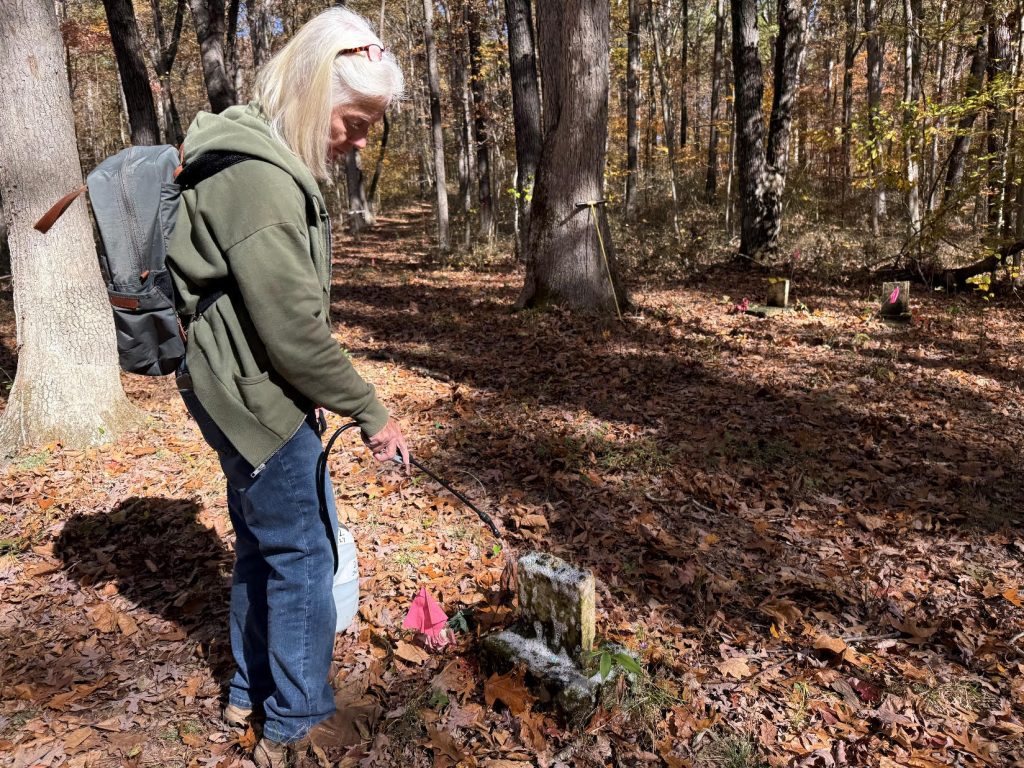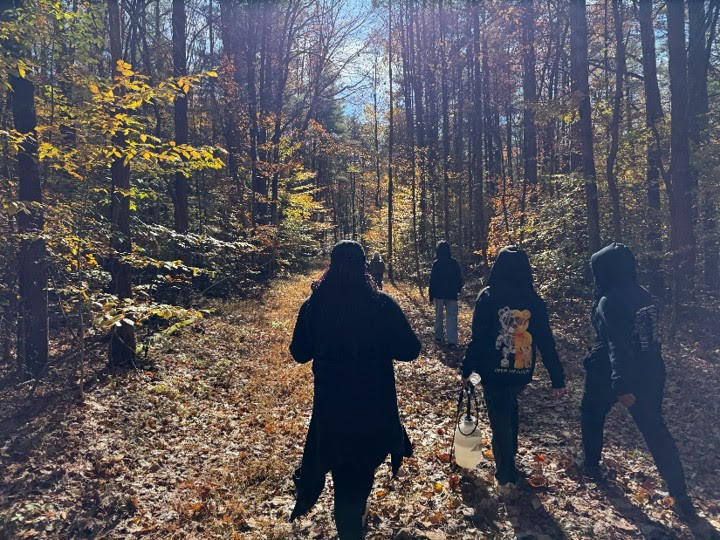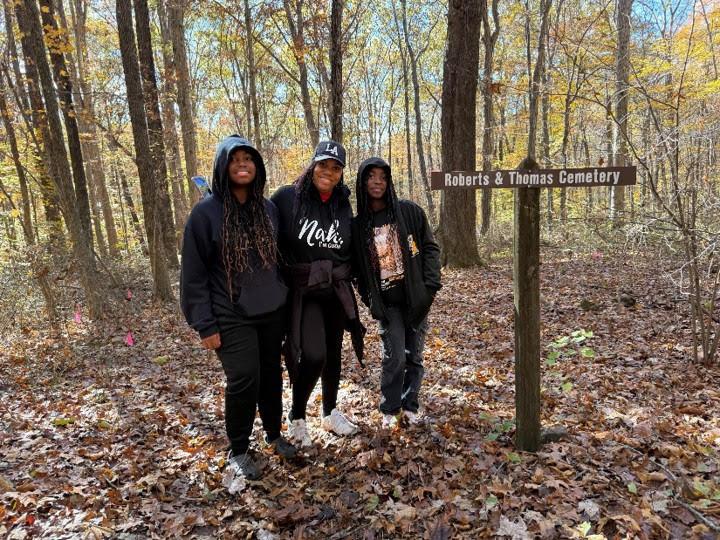
BEDFORD – Descendants of free black pioneers who settled in Orange County in the 18th century recently visited the Roberts & Thomas Cemetery, associated with the Lick Creek Settlement in the Hoosier National Forest. They worked with a cemetery restoration volunteer to clean headstones and discussed potential future restoration ideas with Hoosier National Forest staff.

The Lick Creek Settlement, located just outside of Paoli, was settled in the early 1800s by free Black pioneers who fled racial persecution and increasingly restrictive laws for free black people in their previous home in North Carolina. The community included farmsteads, a meeting house, a church, and a cemetery.
At the end of the Civil War, the population at Lick Creek began to sharply decline and by the early 1900s African Americans no longer owned land in the settlement.
The land fell into disrepair until it was acquired by the Forest Service in 1936, just one year after a law was passed allowing for the purchase of land in Indiana to create a national forest.
Ever since then, Hoosier National Forest staff have taken steps to preserve access to the settlement area due to its historic significance.

“The story of the settlement and those buried at the cemetery is one of perseverance through adversity,” said Hoosier National Forest heritage program manager Tesa Villalobos. “It’s an excellent example of an early free black community who came to Indiana from the east fleeing racial persecution.”
The cemetery is currently being restored with the help of cemetery restoration volunteer and local tour guide Karen Padgett. Padgett, an Orange County resident, first learned of the cemetery while hiking in the Hoosier National Forest.
“I used to lead groups on ‘Magical History Tours’ that would take visitors to local areas of interest,” said Padgett. “One of our tours involved hiking to ‘Little Africa’ in the Hoosier National Forest. I then contacted Lick Creek Settlement descendant Donna Griffin, and we discussed ideas on how to restore the cemetery.”
Padgett first got into cemetery restoration after purchasing land with an old cemetery on it. She uses a special, environmentally friendly biocide that is approved for use in Arlington National Cemetery. According to her, the cleaning solution is straightforward to use.
“There’s no scrubbing involved. I just spray and walk away,” said Padgett. “The biocide kills off growth over time. It can take up to a year for the mold to die off, but mosses and lichens die off faster.”
So far, Lick Creek Settlement descendant Diana Daniels has been pleased with the results.
“I’m glad she’s out here volunteering her time to help us restore the cemetery,” said Daniels. “We’re also happy to have assistance from Hoosier National Forest staff.”

The Hoosier National Forest staff have found working with the descendants very rewarding.
“Our partnership with the Lick Creek Settlement descendants has been very inspiring,” said Villalobos. “We hope to restore the cemetery to honor their ancestors buried there and to share this history and the story of the Lick Creek Settlement families more widely.”
The descendants of Lick Creek and the Forest Service are partnering on research, interpretation, and restoration of the site and cemetery.
The site near the Hoosier National Forest Lick Creek Trail is open to visitors. Click here for more information.



